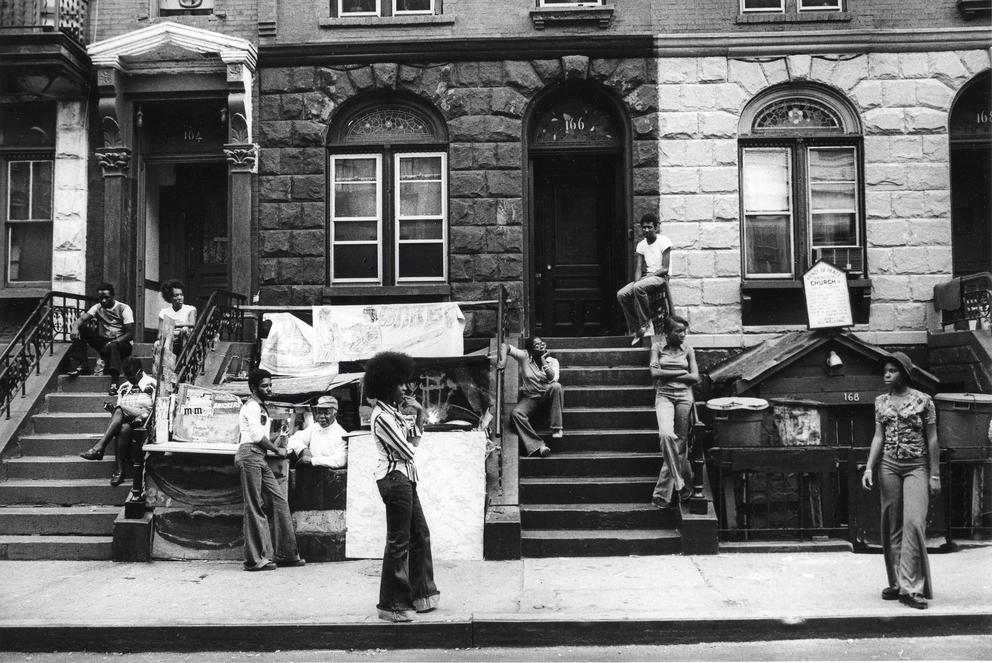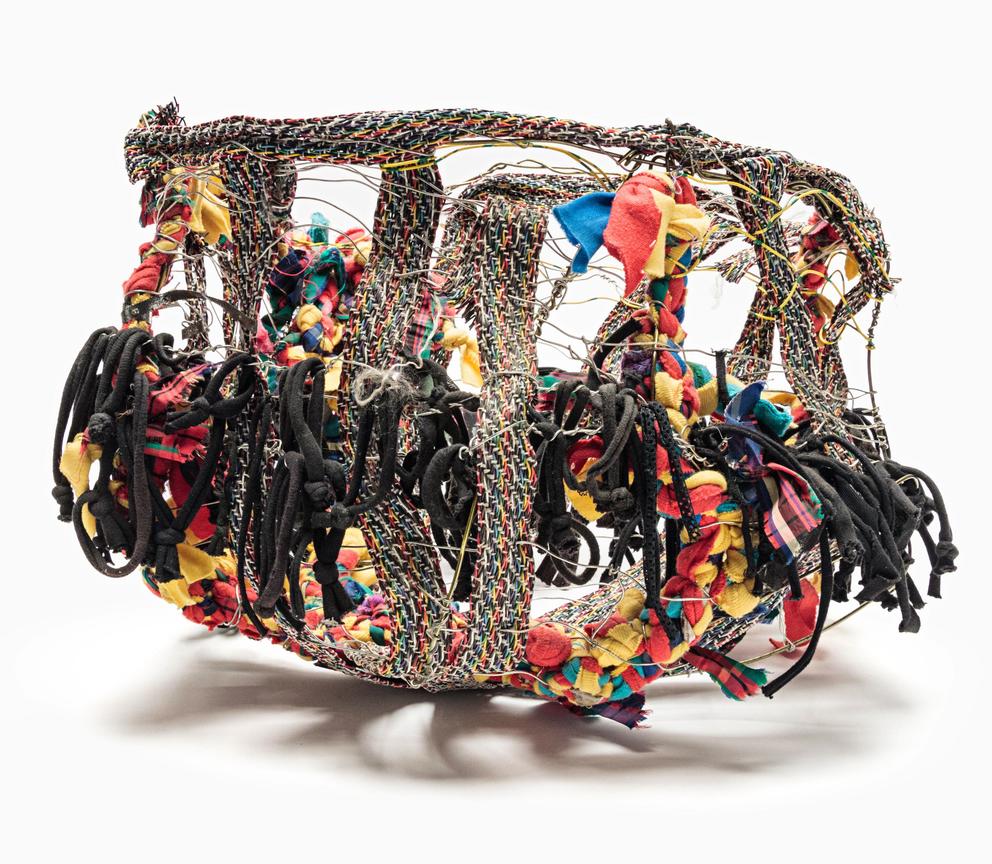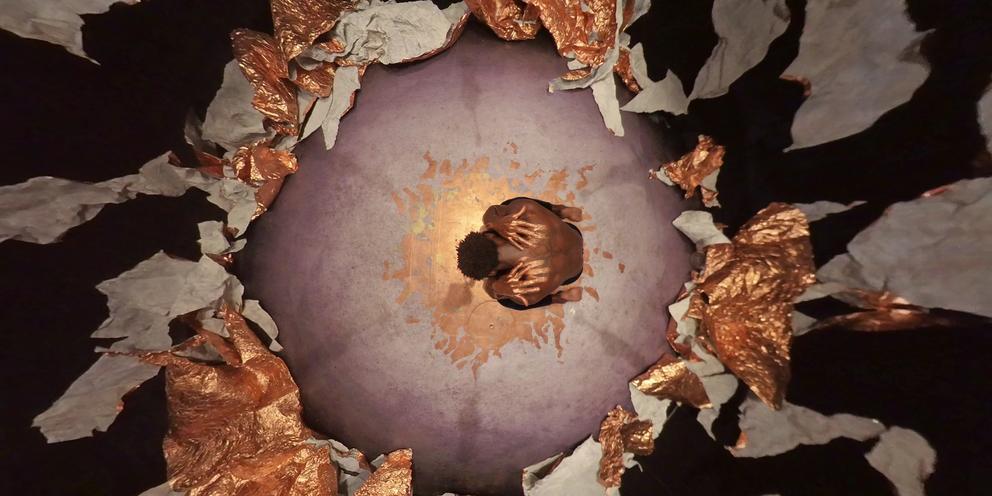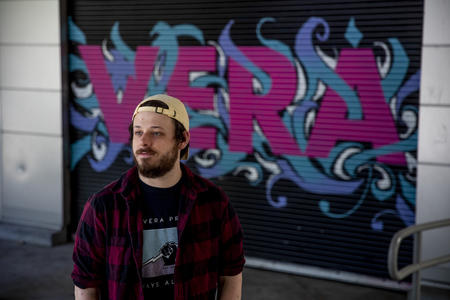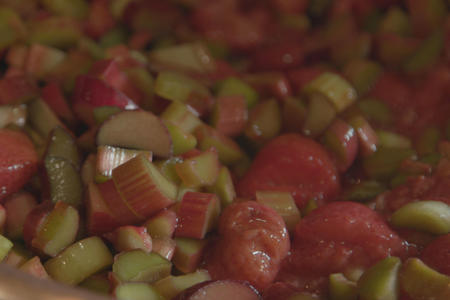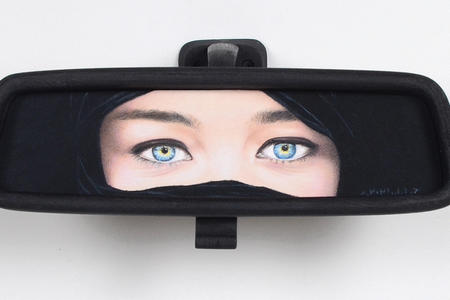Jump to:
This story is part of Crosscut’s 2022 Fall Arts Preview
Visual Art
The Pacific Northwest has been profoundly (re)shaped by technology, yet the region is also known for its DIY spirit and artisan ethos. Independent local curator Melissa E. Feldman believes that acclaimed indie vibe plays out in locally made arts and music as well. Her show, New Art and Sounds from the Pacific Northwest: Indie Folk (Sept. 16 - Jan. 16, 2023) at the Bellevue Arts Museum brings together 17 contemporary local artists who make handmade textiles, baskets, collage, carved wood furniture and more. Among the rich mix: sculptor Marita Dingus, mixed-media artist Joe Feddersen and quilt-maker Joey Veltkamp. (Also included: a playlist of Washington bands.) While “folk aesthetics” is a slippery term rife with assumptions and risk of appropriation, Feldman here focuses on art that is “unpretentious and handmade,” showcasing, she says, “an ethos of making do with what one has.”
New York artist Nina Chanel Abney plays with the idea of “folk art” as well, self-describing her geometric, somewhat cubist collages of Black life as “deceptively simple.” Abney has become something of a big deal in the art world, exhibiting at major museums and showing her art everywhere from the walls of the new Miami Worldcenter to a cover of The New Yorker to a Meek Mill album. For her exhibit at the Henry Art Gallery, Nina Chanel Abney: Fishing Was His Life (Oct. 1 - Feb. 5, 2023), she’s showing new collages, graphically flattened scenes and paintings of Black fishing laborers.
The show Fluid in Nature (Oct. 6 - Nov. 26), at Stonington Gallery in Pioneer Square, will also surface sea creatures. The exhibit groups the work of three Indigenous master glass artists of the Pacific Northwest Coast: Preston Singletary (Tlingit), Raven Skyriver (Tlingit) and Dan Friday (Lummi). Friday (renowned for his glass salmon and replicas of the stone anchors used in reef netting), Singletary (who recently showed a majestic, amber-hued “Killer Whale Totem” at the Seattle Art Fair) and Skyriver (who excels at sea creatures shaped while the glass is still molten hot) all encourage us to pause and consider the grace of the natural world.
Approaching art with a similar sensibility are Dawoud Bey and Carrie Mae Weems, two of the most important contemporary photographers working today. Accordingly, the photography show Dawoud Bey & Carrie Mae Weems: In Dialogue (Nov. 17 - Jan. 22, 2023) — expected to be a blockbuster — at the Seattle Art Museum will feature more than a hundred photographs. The collected photos trace the artists’ work from the 1970s all the way up to now, and showcase a breadth of topics and subjects, such as: women’s self-perception and domesticity; the Underground Railroad and Weems’ reenactments of 20th-century tragedies; and the impact of architecture. What connects their work, besides a friendship and a medium, is a shared timeframe and understanding of the power of photography as a way to explore — and celebrate — the experiences of Black people. - MVS
Theater
“The Constitution is a living document,” says playwright Heidi Schreck, in What the Constitution Means to Me at Seattle Rep (Sept. 30 – Oct. 23). “It is a living, warm-blooded, steamy document. ... It is hot and sweaty.” The old parchment probably feels extra hot and bothered these days, given the political climate. But in this Tony-nominated play, Schreck — who grew up in Wenatchee and spent years in the Seattle theater community — focuses on the document’s personal impact. Channeling her high school oratory-champ self (played in this production by Broadway alum Cassie Beck), she reveals how interpretation of the laws set forth in the Constitution have directly impacted the women in her family — including her own decision to have an abortion at age 21.
Another Broadway smash is coming to Seattle this fall (and tickets are selling fast). Coming to The Paramount, Jagged Little Pill (Nov. 8-13) is the musical based on the 1995 album by Canadian rocker Alanis Morrisette. And whaddya know, a drama-filled record can make for a successful play — at least in the hands of librettist Diablo Cody. Nominated for 15 Tony Awards in 2020, Jagged Little Pill tells the story of a white American family in turmoil — a mother hooked on pain medication, a father addicted to porn, an adopted, queer, Black daughter who feels unseen and a son pressured to be “perfect.” There are a lot of social issues packed into these pages (misogyny, sexual assault, transphobia, classism) but audiences say what keeps the story moving are the irresistible tunes.
You know who else likes to pack a preponderance of drama into a play? William Shakespeare. See for example Macbeth (Oct. 25 - Nov. 20), which covers witchcraft, prophesy, vanity, suicide and plenty of politically motivated murder — not to mention a lesson in dramatic irony Alanis Morrisette could appreciate. The Seattle Shakespeare production at Seattle Center’s Center Theatre will be directed by John Langs (who is also ACT’s artistic director), and stars longtime Seattle actor Reginald André Jackson as Macbeth and Alexandra Tavares as the Lady with the damned spot.
For another tale of marriage run afoul, look to The Williams Project, which is producing James Baldwin’s The Amen Corner in collaboration with LANGSTON (Oct. 28 – Nov. 20). Directed by Reggie D. White and never before produced in Seattle, this 1954 play was the first work Baldwin wrote for the stage. Set in a Harlem church, the story concerns Pastor Margaret Alexander, who parishioners believe was left by her husband long ago. But when he shows up, severely ill, a different story emerges. It’s Baldwin, so the tale is naturally multilayered, revealing truths about the effects of poverty, racism and religious hypocrisy. Director White says it’s also about “what happens when you bury yourself so far into an identity that you can’t even notice the ways it’s killing you. How a refusal to look within can make us go blind altogether.” - BD
Music
When you think of accomplished classical composers, do Cecilia Maria Barthélemon and Maria Antonia Walpurgis come to mind? How about Maddalena Laura Sirmen, Amélie-Julie Candeille or Marianne Anna Katharina von Martinez? Early Music Seattle’s Baroque Orchestra is bringing the work of these Silenced Voices (Sept. 25, 1:30 p.m.) to the Town Hall stage in order to, as they put it, “set the record straight!”
Fast-forward to the 19th century: This fall, the Seattle Opera is staging Richard Wagner’s epic Tristan and Isolde (Oct. 15-29, 6.30 p.m.), widely considered among the best operas ever written. This staging of the tragic love story comes from the Teatro Argentino de la Plata in Buenos Aires, presented here under the tutelage of Argentinian stage director Marcelo Lombardero. He has opted for a scenic set design inspired by fantasy comic book illustrations, using projected drawings, videography and animation. The electrifying Canadian conductor Jordan de Souza will be at the helm, with “vocal phenomenon” and Seattle audience favorite Mary Elizabeth Williams (soprano) taking on the role of Isolde, alongside German tenor Stefan Vinke as Tristan.
To continue the swell of romantic crescendos, head to the Paramount Theatre, where Death Cab For Cutie will be playing songs from the band’s new album, Asphalt Meadows. The album’s first single, the notably electro-infused “Roman Candles,” deals with “existential dread that goes hand in hand with living in a nervous city on a dying planet,” according to the formerly Seattle-based band. “And that the only way to be in the moment is to let it all go.” Amen. The band will count on opener and Seattle beatmaker-in-residence Chong The Nomad to help the audience do just that. (Oct. 26-27, 8 p.m.)
Also premiering brand-new music is Mexican composer Enrico Chapela, whose Antiphaser Concerto for electric violin (played by renowned musician Pekka Kuusisto) and orchestra will surely hint at his history as a guitarist and heavy metal rocker. Expect the unexpected during this world premiere at the Seattle Symphony: Chapela once wrote a piece of music inspired by the 1999 Mexico vs. Brazil soccer match. (Nov. 3, 7:30 p.m., Nov. 5, 8 p.m. and Nov. 6, 2 p.m.) - MVS
Dance
Certain choreographers view the world in more planes than the rest of us — with a 4-D understanding of how bodies move in space. Zoe Scofield is one of those people, always pushing her audience to see things from another angle. In 2013, her Seattle company Zoe | Juniper (featuring creative partner and video artist Juniper Shuey) staged a performance that the audience watched while lying flat-out on the stage floor. In 2016 they created a film in 360-video, for projection in the Pacific Science Center’s Laser Dome, in which the dancer appeared to move along the perimeter of the dome.
Now Scofield and Shuey offer yet another perspective, in The Other Shore: Always Now at On the Boards (Oct. 5 – 9). Here, small audience groups will lie on the floor perpendicular to each other and experience the performance happening right above them, as well as via immersive video technology. Prepare to shift your way of seeing.
While some dance forms poke holes in the performer-audience boundary, others are all about concealing the tremendous effort involved — say, ballerinas leaping around en pointe like it’s no big whoop. And then there’s Abby Zbikowski. This choreographer’s aim is to explore and exhibit the exertions of the human body.
For her new piece Radioactive Practice at Meany Center (Oct. 27-29), Zbikowski’s company Abby Z and The New Utility worked with Senegalese dance artist Momar Ndiaye to create a physically demanding work that challenges traditional notions about dance. (The event is part of a season-long series guest-curated by world-renowned choreographer Bill T. Jones.) Positing intense movement as a way of claiming space for oneself, the piece features dancers moving urgently and nonstop — jumping, stomping, thrusting, lunging and lifting. It’s no coincidence the work was built during the intense pandemic years. “It’s been like a fire we’ve all had to keep going through,” Zbikowski told Indy Week in June. “I think everyone can relate to just keeping going, now more than ever.”
Here’s another best practice for contemporary dance fans: When Crystal Pite and/or her Vancouver, B.C.-based company Kidd Pivot comes to town, do not hesitate, just get tickets and go. Pite is one of the most inventive choreographers working today, producing high caliber works that impress both at the physical level of the dance as well as the deeper meaning behind it. She’s part of the mixed bill The Season’s Canon at Pacific Northwest Ballet (Nov. 4-13), which also includes a world premiere by Dwight Rhoden and Balanchine’s “Duo Concertant.” Pite’s piece, which shares the title of the bill and remixes Vivaldi’s famous composition as musical accompaniment, is new to PNB. (View a clip from a Paris performance.) As always, she creates an exquisite combination of flowing masses and jerky automatons (see Crosscut’s obsessed-fan analysis), which all adds up to a deep feeling of humanity.
Have you heard of Hazel Scott? An incredibly talented pianist with a gorgeous, smoky voice, the Trinidad-born musician was once the toast of the American jazz scene. She starred in Hollywood movies, married civil rights activist and U.S. Congressman Adam Clayton Powell and was the first African American woman to have a television show. So why isn’t she a household name? Blame the “Red Scare” of the 1950s.
Scott was blacklisted by the House Un-American Activities Committee (HUAC) — and stood up to the inquisitors during the hearings. (Learn more in this fascinating short doc.) In short: the experience ended both her TV show and her career in the U.S. But now the legendary Dance Theater of Harlem is working to help bring Scott the recognition she deserves. Choreographed by Tiffany Rea-Fisher, the brand new piece Sounds of Hazel: The Hazel Scott Ballet (at The Paramount, Nov. 5) blends ballet and jazz dance with Scott’s music to create a long-overdue, sensory salute. - BD
Festivals
Volume I: Humble Beginnings, the name of Puget Sound’s inaugural, annual writer’s festival (Sep. 16-17) belies the fact that a) it’s a major deal that the city is getting a new literary fest, and b) the visiting speakers for its first edition are anything but unassuming: Siddhartha Mukherjee, Oscar Hokeah, Joyce Carol Oates and Bellevue’s own Ted Chiang (among others). Courtesy of an ad-hoc group of Seattle-area literary orgs, the festival will bring nine guest authors to the stage for a weekend of talks, interviews, discussions and book signings at Town Hall Seattle’s historic First Hill building.
Less fledgling is the Northwest Film Forum’s 25th annual Local Sightings Film Festival, an always-exciting showcase of Pacific Northwest film talent. The 2022 program (Sept. 16–25) runs online and in-person and offers a true smorgasbord of PNW-sourced short and feature films, including: homespun horror flick Skagit, Seattle-set coming of age drama Mountainside, the locally made short Death’s Diner, the debut of art maven Tariqa Waters’ new pop-art talk show, Thank You, MS PAM and former NWFF director Vee Hua’s anticipated short Reckless Spirits.
Another new-ish festival well on its way to becoming an anticipated affair is Refract, a yearly, citywide celebration of the Pacific Northwest’s wealth of glass artists and glass-art spaces (Oct. 13-16). Boasting open studios, glass-blowing lessons and guided tours (including to the private working studio of glass giant Dale Chihuly), the fest also brings a glass-a-ganza of new art shows. You’ll find work by master glass artists Preston Singletary, Dan Friday and Raven Skyriver at Stonington Gallery, pieces by local legend Ginny Ruffner at Bainbridge Island Museum of Art, and intriguing glass orbs by John Kiley at Traver Gallery. This is definitely a glass not just half-full but overflowing.
Seattle’s jazz cup runneth over this fall as well, thanks to the annual Earshot Jazz Festival (Oct. 8 - Nov. 6), which brings the best of Northwest and international jazz to local stages. Among the enticing local offerings are: a tribute to dearly departed local jazz phenom Overton Berry (featuring the Garfield High School jazz band); tap dancing saxophonist Alex Dugdale; Seattle Repertory Jazz Orchestra playing Duke Ellington’s “Reminiscing in Tempo”; and Jacqueline Tabor and Marina Albero paying homage to legends Nina Simone and Billie Holiday. Sounds like it’s going to be a moody and groovy season. - MVS and BD
Get the latest in local arts and culture
This weekly newsletter brings arts news and cultural events straight to your inbox.


